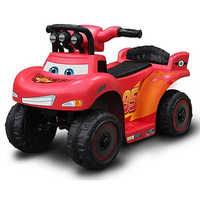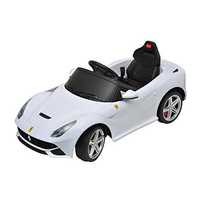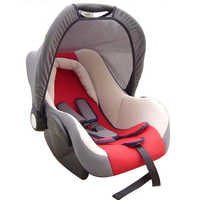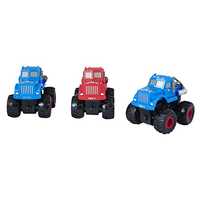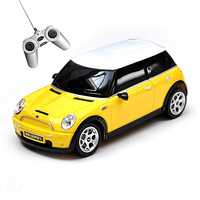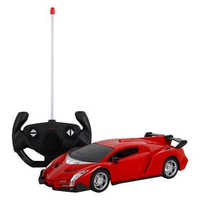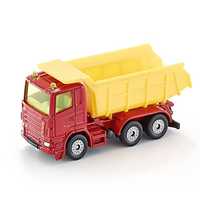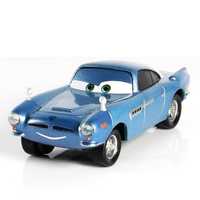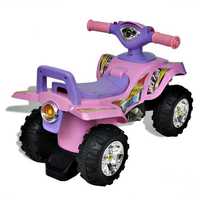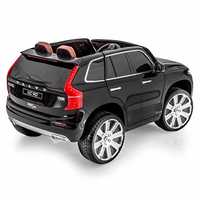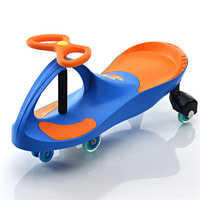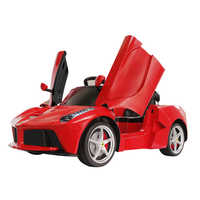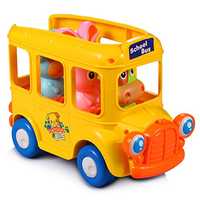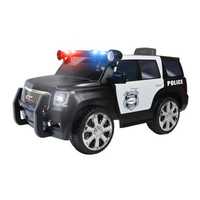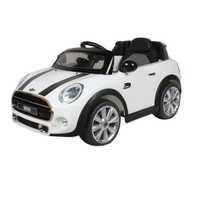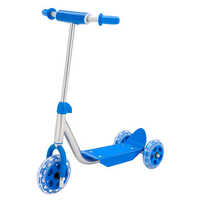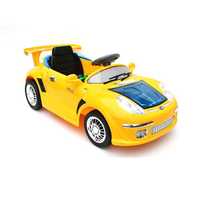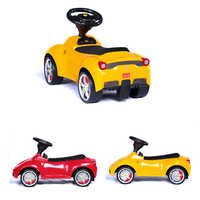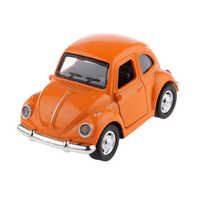Toy Cars
(1295 products)
Top Toy Cars Categories
Explore More Categories
Made in India
Decoration Brown Green Antique Metal Toy Car 2 SP-016
Price: 610 INR (Approx.)/Piece
MOQ - 10 Piece/Pieces
Metals Type - Metal
Color - Brown and Green
Product Type - Decoration
14 Years
Business Type: Manufacturer | Distributor
GIFTMART
Made in India
Instant Tolo Rider Kid Car
MOQ - 52 Piece/Pieces
2 Years
Business Type: Manufacturer
TOYZONE IMPEX PRIVATE LIMITED
Made in India
Light Weight Wood car toy
Material - Wood
Size - Comes in various size
Color - Comes in various color
2 Years
Business Type: Manufacturer
GOGALGAI TOYS
Made in India
Mini Chekku, Machine Dimensions: 375x295x162 mm
2 Years
Business Type: Manufacturer | Distributor
HANDY THINK ENGINEERING
White Benz 6688 With Large Battery Kids Car
Price Trend: 40-200 USD ($) (Approx.)/Piece
MOQ - 100 Piece/Pieces
Material - plastic+iron
Metal Type - Steel
Plastic Type - ABS
4 Years
Business Type: Manufacturer | Distributor
HEBEI JIANGWO TRADING CO., LTD.
Made in India
Multicolor Rock Crawler Car Toy
Price: 850 INR (Approx.)/Piece
MOQ - 100 Piece/Pieces
Material - Plastic
Design - Modern
Size - Small
Business Type: Manufacturer | Supplier
Saini Toys
Made in India
Battery Toy Bikes
Price: 22000 INR (Approx.)/Unit
MOQ - 3 Unit/Units
5 Years
Business Type: Manufacturer | Supplier
BINGO CYCLES
Indian Inquiries Only
Made in India
Multicolor Metal Rock Leader
Price: 550 INR (Approx.)/Piece
MOQ - 50 Piece/Pieces
Material - Metal
Color - Multicolor
Age - 3-12 years
Business Type: Manufacturer | Trading Company
RV Enterprises
Made in India
Plastic Delux Magic Car
Price Trend: 950.00 - 1500.00 INR (Approx.)/Piece
MOQ - 8 Piece/Pieces
Material - Plastic
Metal Type - Other
Plastic Type - Other
7 Years
Business Type: Distributor | Trading Company
GAURANGA CYCLE CO.
Plastic Toy Car For Kids
Price: 34 INR (Approx.)/Piece
MOQ - 1000 Piece/Pieces
Type - AL007 WC Car For Kids
Material - Plastic
Style - Modern
2 Years
Business Type: Distributor | Exporter
LOKENATH TOYS & GIFT
Indian Inquiries Only
Multi Color Outdoor Game Non Operated Plastic Designer Baby Monkey Car For Kids
Price: 2299 INR (Approx.)/Piece
MOQ - 500 Piece/Pieces
Color - Multi Color
Material - Plastic
Function - Play
2 Years
Business Type: Trading Company
Mishra Traders
Radio Control Toy Cars
8 Years
Business Type: Manufacturer | Supplier
CHINA TOP WELL LIMITED
Kids Red Riding Cars
Price: 10000 INR (Approx.)/
Business Type: Manufacturer | Distributor
MICROMASS ENTERPRISES
Made in India
Red Orange Mercedes Suv Battery Car
Price: 27000 INR (Approx.)/Unit
MOQ - 100 Unit/Units
Material - Pvc
Metal Type - Steel
Plastic Type - PVC
1 Years
Business Type: Manufacturer | Distributor
Khelokudoo
Toy Car
Business Type: Manufacturer | Distributor
VANTAGE RESOURCES LTD.
Free Wheel Sports Car
9 Years
Business Type: Supplier | Trading Company
PROPACK ENTERPRISES
Indian Inquiries Only
Hero Squad Police Box
Business Type: Manufacturer | Supplier
Ok Play India Limited
Red And Black Plastic Remote Control Car
Material - Plastic
Design - Stylish
Color - Red And Black
Business Type: Manufacturer | Distributor
Arora Toys
Multi Color Remote Car Toy For Kids
Price: 750 INR (Approx.)/Piece
MOQ - 18 Piece/Pieces
Material - Plastic
Design - Trendy
Color - Multi Color
Business Type: Trading Company
GAMES AND TOYS INDIA
All Baby Stunt Car Toys
Price: 350 INR (Approx.)/Piece
MOQ - 3 Piece/Pieces
Material - 360 Rotating Rolling Car Radio Control RC Truck Toy for Kids - Color as per Availability41%off
Metal Type - Stainless Steel
Plastic Type - PVC
Business Type: Trading Company
Gurtoy
Indian Inquiries Only
Battery Operated Baby Toy Car
Business Type: Trading Company
Little Rides India Pvt. Ltd.
Indian Inquiries Only
Blue Remote Control Toy Racing Car For Kids
Price: 10000 INR (Approx.)/Piece
MOQ - 10 Piece/Pieces
Function - For Kids Playing
Design - Blue Remote Control Toy Racing Car
Color - Blue
Business Type: Manufacturer
Yadav Enterprises
Good Quality Electric Toy Cars
Price: 25000 INR (Approx.)/Piece
MOQ - 100 Piece/Pieces
Material - Plastic
Plastic Type - PVC
Function - battery
Business Type: Exporter | Service Provider
Dev Enterprise
Multi Color Remote Control 360 Degree Plastic Rolling Stunt Car For Kids. Android Charger & 800 Mah Battery. 3 Hrs Running Time,
Price: 820.00 INR (Approx.)/Set
MOQ - 1 Set/Sets
Color - Multi Color
Material - Plastic
Metal Type - Aluminum Alloy
Business Type: Supplier | Trading Company
Famous Gallery
Multicolor 26X11X7 Centimeters Color Coated Abs Plastic Body Remote Control Toy Car
Price: 440 INR (Approx.)/Piece
MOQ - 270 Piece/Pieces
Material - Plastic
Plastic Type - ABS
Function - Rechargeable
Business Type: Manufacturer
Mirana Innovations Pvt. Ltd.
Remote Control Car Toy
Price: 260 INR (Approx.)/Piece
MOQ - 100 Piece/Pieces
Material - Plastic
Size - Comes in various sizes
Color - Comes in various colors
Business Type: Trading Company
Batra Traders
ABS Plastic Kids Remote Control Car
Price: 800 INR (Approx.)/Pair
MOQ - 1 Pair/Pairs
Material - plastic
Design - good
Color - multicolor
Business Type: Manufacturer
Royal Gift Palace
Plastic Toy Car
MOQ - 200 Piece/Pieces
Business Type: Distributor
Nem Chand Jain & Co.
Toy Cars Manufacturers | Suppliers in India
| Company Name | Location | Member Since |
|---|---|---|
| Giftmart | Mumbai, India | 14 Years |
| Propack Enterprises | New Delhi, India | 9 Years |
| China Top Well Limited | Hangzhou, China | 8 Years |
| Gauranga Cycle Co. | Kolkata, India | 7 Years |
| Bingo Cycles | Bardoli, India | 5 Years |
| Hebei Jiangwo Trading Co., Ltd. | Shijiazhuang, China | 4 Years |
| Toyzone Impex Private Limited | New Delhi, India | 2 Years |
| Gogalgai Toys | Thane, India | 2 Years |
| Handy Think Engineering | Coimbatore, India | 2 Years |
| Lokenath Toys & Gift | Kolkata, India | 2 Years |
An Overview of Toy Cars
Types of Toy Cars
Benefits of Toy Cars in Toddlers for Child Development
For many generations, playing with toy automobiles and other vehicles has been a favourite childhood activity. Nothing compares to zipping a vehicle across the floor, replete with passionate tooting, beeping, and brimming, of course. or spending many hours trapped in the rails of your cherished wooden train set. These playthings are excellent for fostering creativity. Your child is capable of planning automobile races, setting up rescue operations using emergency vehicles (such as ambulances and fire engines), and operating people-moving carriers. But the advantages of toy cars don't end there. It's a great method for youngsters to learn about the world around them and to develop their social, cognitive, and motor abilities.
The advantages of toy cars and automobiles for child growth are as follows:
Language and communication: Playtime with automobiles, trucks, aircraft and other vehicles offers the ideal chance to practise interacting with people in a social setting. Your youngster may develop their creativity and imagination while learning how to communicate verbally and expand their vocabulary. Participating in the game will help you do this. For instance, you may urge your child to clarify what they are doing and encourage them to use basic phrases like "more," "again," "go," and "stop". Additionally, they will work on their language and communication abilities alone. Kids often hear adults around them copying their language and behaviours. Therefore, if you often honk your horn and yell at other cars, be careful. While quietly playing in the corner, you may anticipate your little child doing the same.
FAQs: Toy Cars
What is the best car toy?
Playmobil Back to The Future DeLorean is among the best toy cars on the market.
What does a toy car do?
A child's fine motor skills develop while they play with miniature toy automobiles. Children pick up, carry, toss, push, and pull miniature toy automobiles as they move about, improving their hand-eye coordination and hand dexterity in both hands. Essential is good fine motor abilities. These abilities build on one another.
When was the first toy car made?
Manufacturers like Meccano, located in the United Kingdom, and Dowst Brothers, based in the United States, started making toy cars in 1901.
Do kids like toy cars?
Of Course, they do. Boys and girls both love cars since they can play with them anyplace. This makes cars a favourite among both genders.
